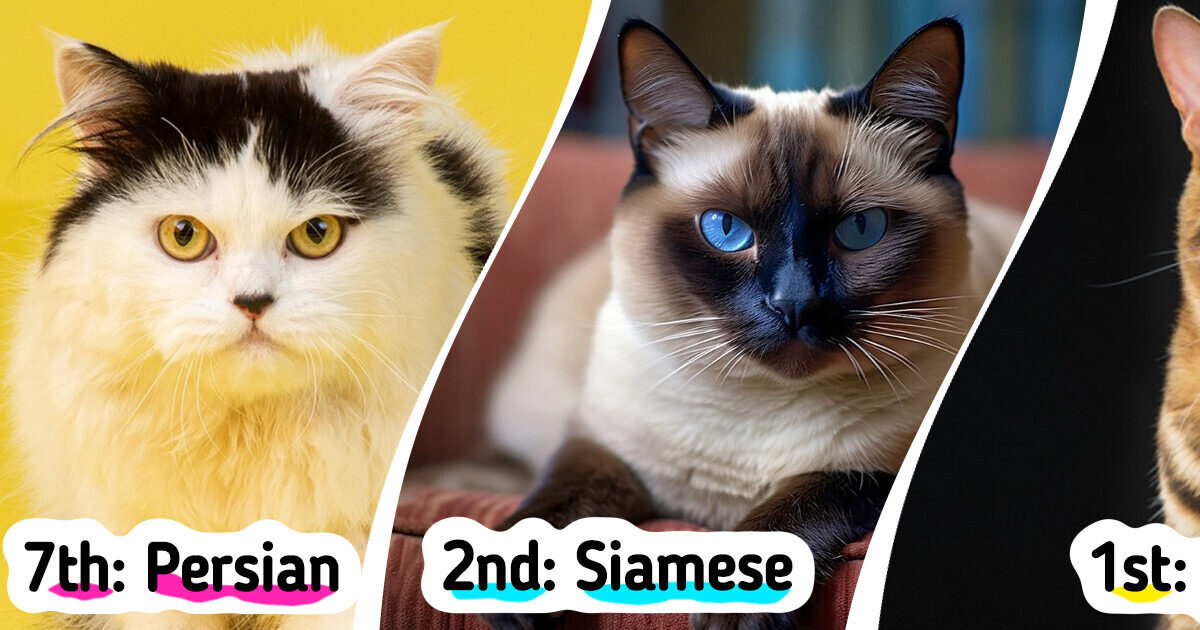14 Stories About Men Whose Actions Are Really Hard to Explain


Owning a cat is full of ups and downs. These fascinating pets are both affectionate and independent, curious yet reserved, smart but sometimes silly. However, they can be tricky, with occasional behavior issues, picky eating, and sometimes unexpected reactions to affection.
Some cat breeds are more demanding than others, so if you’re a first-time owner, it might be best to avoid the ones listed here. Each has wonderful traits, but they can be a bit much for beginners.
The Bombay looks like a tiny black panther, featuring a sleek black coat, striking copper eyes, and a unique sway in their walk. Even their paw pads and whiskers are black, adding to their panther-like appearance. If you spend time with one, you might think they believe they’re panthers, too!
This breed is playful and energetic; while they’re not inherently aggressive, they enjoy rough play, which means you might end up with a few scratches or bite marks. They can also react strongly to loud noises or sudden surprises, making them a less-than-ideal choice for families with small children.
Persian cats are easily recognizable by their flat faces, large eyes, and luxurious coats. They have stocky bodies, typically standing 10 to 15 inches tall and weighing between 7 and 13 pounds. They are more suitable for homes with older children rather than toddlers or babies.
They can live harmoniously with other cats and gentle dogs that don’t chase or play too roughly, but introducing them to new pets should be done gradually and carefully. Persians are known for their loving and loyal nature, making them excellent emotional support animals. There’s nothing quite as soothing as having one of these cats curled up in your lap, purring away.
So, why are they included on lists of “angry” cat breeds? The answer is allergies. If you have even a mild allergy to cats, a Persian will quickly make it clear, as they have higher levels of the protein that triggers allergic reactions in their fur. Don’t be surprised if you find yourself dealing with red eyes and sniffles!
The Savannah cat is a hybrid of the domestic cat and the wild African Serval, boasting striking coats that give them an exotic appearance. While they may resemble their wild ancestors in some ways, Savannahs can be sweet-natured and family-friendly when well-socialized.
However, before you fall in love with this lively breed, you should know that Savannahs aren’t fans of being held, and they’ll make it clear when they’re not happy about it. Independent and aloof, they’re best for owners who understand the importance of giving cats their space. If you’re new to cat ownership, you might struggle with the wait for a Savannah to warm up to you, and you could end up needing a lot of Band-Aids!
The American Wirehair is a medium to large cat with a rounded body and large, expressive eyes that are round and slightly slanted at the outer corners. They come in a wide range of colors.
American Wirehairs may look cute and cuddly, but this charm comes with a catch. They are naturally independent and may not enjoy being picked up or snuggled. They’re quick to let you know when you’ve overstayed your welcome, often without much warning. They can also be sensitive around strangers, so you might need to keep them in a separate room when guests arrive.
The Singapura is a small cat with big eyes and ears. Males typically weigh around six to eight pounds, while females are even lighter at just five pounds.
The Singapura is a lively, affectionate cat that thrives on companionship and attention. Not one to stay on the floor, this extroverted breed loves being around people and often seeks the spotlight—making it a popular choice for circus shows. With their unique, almost alien-like look, Singapuras can be tempting to adopt. However, they’re known for their strong will and skittish nature, and surprising them can result in a quick flash of claws and teeth.
The Korat cats are renowned for their stunning blue coat with silver tips and are recognized for their intelligence. On average, a Korat weighs up to 10 pounds and measures between 15 and 18 inches in length.
While Korats are relatively rare and cherished for their striking color and bright green eyes, they shouldn’t be selected as a pet based solely on appearance. Not all owners are prepared for this breed’s needs. Korats thrive in peaceful environments and will demand tranquility, potentially reacting aggressively if they don’t get it. Because of this, they may be a better match for single owners who prefer solitude. However, bringing a Korat into a home with children might lead to challenges.
Siamese cats are known for their distinctive and captivating appearance. They have large ears, striking baby-blue eyes, and a slim, sleek build, highlighted by dark color points on their ears, face, paws, and tail. The four classic Siamese colors are seal, chocolate, lilac, and blue point.
The Siamese cat might make it onto the best breed list, but it depends on your viewpoint. They tend to form strong attachments to one family member and can become aggressive if someone else tries to interrupt their cuddles. This can be tricky if you have children or if you’re not the chosen person. Additionally, breaking this behavior can be extremely difficult, especially if you don’t have experience training cats.
The Bengals are known for their wild streak, which might sound exciting at first, but it can become challenging. These cats typically dislike being handled and may react aggressively if you try to pick them up. However, if you don’t mind a bit of rambunctious play, the Bengals can be wonderful companions. Just be prepared—they love to sneakily follow you around whenever you leave your room.
Be cautious: boredom can make Bengals destructive, as they need plenty of stimulation to stay content and out of trouble.
The International Cat Association (TICA) officially recognizes 73 cat breeds, and in this article, we’ve highlighted some of the most unique and fascinating breeds you won’t encounter every day.











